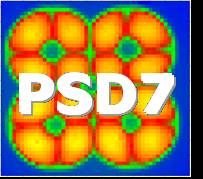Speaker
Prof.
Robert Lewis
(Monash University, Australia)
Description
The instrumentation group within Monash Centre for Synchrotron
Science (MCSS) and the Co-operative Research Centre for Biomedical
Imaging Development (CRC BID) are developing detectors for medical,
industrial, synchrotron and other scientific applications. A seven
year project has been initiated to develop hybrid pixel detectors
for medical radiography. The device will comprise an array of
semiconductor diodes bonded to chips containing an array of readout
pixels. Chips will be tiled to produce large area detectors, capable
of energy dispersive photon counting operation at moderate spatial
resolution (to 5 lp/mm), facilitating simultaneous multi-spectral
image data acquisition.
The read out chips provide individual data acquisition channels for
each pixel. Each channel comprises a pre-amp, shaping amp, analogue-
to-digital converter (ADC), histogramming memory, a controller and
digital-to-analog converter (DAC) to adjust amplifier gains. The
controller places data to the correct memory location and must
communicate with adjacent pixels to identify and resolve multi-pixel
events. Considerable challenges must be overcome to meet these
design goals using current 90 nm fabrication processes. The project
will investigate newer the compound semiconductor materials GaAs,
CdTe, Cd0.9Zn0.1Te and HgI2, and explore methods for bonding these
onto the readout chips.
The rapid acquisition of multi spectral data will enable K-edge -
subtraction imaging of contrast agent distribution and quantitative
methods of x-ray analysis (QXRA), which delivers information about
the density and composition of the sample. The principle obstacles
to realising QXRA are the energy resolution and stability of the
detector, the detection of scattered radiation and the limited
number of photons available per channel. We present preliminary
results from studies examining the design features of the hybrid
pixel detector, and the feasibility for using the device for QXRA.
Acknowledgements
This study was supported by grants from the Australian government,
department for education, science and training CRC for Biomedical
Imaging Development.
Primary author
Stewart Midgley
(Monash Centre for Synchrotron Science)
Co-author
Prof.
Robert Lewis
(Monash University, Australia)




